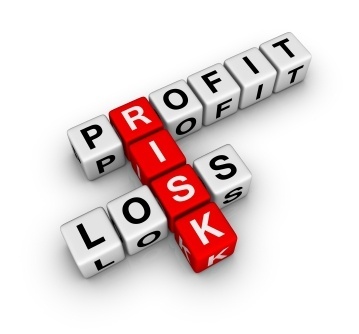As kids, we’ve often ‘stolen’ change from our parents and pooled in the coins to share an ice-cream with our friends. There was always that one friend, to your awe and annoyance, who seemed to be able to keep track of exactly how much you owed him from months ago.
Of course, as adults finances seem a lot more complicated than that, but they don’t have to be.
Here’s how you can draw your own personal ‘T’ journal (that accountants use) and assess your financial situation realistically.
Preparing your own Personal P&L Account
This is a statement of your income and expenses. Record all the earnings, i.e. your salary or business income, income from dividends, interest and any other miscellaneous earnings. Put down the expenses either below the earnings column or on the right side of it. The expenses can be further categorized as fixed, variable and one-time expenses.
Here is a sample of an income and expense account of an individual for the month of June 2015:
| Earnings | Amount (Rs) |
| Salary (net of taxes) | 2,00,000 |
| Earnings from property | 20,000 |
| Dividends | 5,000 |
| Interest income | 2,000 |
| Any other* | 43,000 |
| Total | 2,70,000 |
| Expenses | |
| EMIs | 65,000 |
| Investments (SIPs, Insurance premium, etc) | 25,000 |
| Grocery and other food items | 35,000 |
| Travel expenses | 15,000 |
| Utility bills, salary to domestic help | 10,000 |
| Kids education | 20,000 |
| Entertainment (movies, eating out, vacations) | 25,000 |
| Medical expenses | 12,000 |
| Miscellaneous# | 30,000 |
| Total | 2,37,000 |
| Total savings | 33,000 |
*Proceeds from sale of old car; #Loan to a relative
In the month of June, the individual had an overall savings of Rs 33,000, after accounting for all other expenses. A detailed study of this income and expense account tells us that the individual has regular monthly earnings of Rs 2,20,000 (salary and rental income), and fixed expenses (barring entertainment, medical and miscellaneous expenses) of Rs 1,70,000.
His total monthly savings are 11% of his total regular earnings and 15% of the total fixed expenses. This is one area where he can increase his allocation, given that he has Rs 50,000 (2,20,000-1,70,000) surplus after accounting for all fixed expenses. If required, he can cut down on entertainment and miscellaneous expenses.
Preparing your own Balance Sheet
Though a balance sheet, or a record of assets and liabilities, is meant for a specific period (usually a financial year for businesses), you can keep it simple by recording the assets (investments, cash, receivables, etc) and liabilities (loans and payables) at their market/fair value on a particular date. Say 30 June 2015.
Value of assets and liabilities on 30 June 2015
| Assets | Value (Rs) |
| Surplus cash (in savings account) | 50,000 |
| Equity investments (Mutual funds and direct equity) | 5,00,000 |
| Debt investments (FDs and debt MF) | 3,00,000 |
| Retirement savings (Investment in EPF, PPF and traditional insurance policies) | 11,00,000 |
| Value of properties(s) | 1,50,00,000 |
| Residual value of car | 4,50,000 |
| Receivables (loans given to friends and relatives at no interest) | 50,000 |
| Total (a) | 1,74,50,000 |
| Liabilities | |
| Home loan | 60,00,000 |
| Car loan | 6,00,000 |
| Credit card balances | 44,000 |
| Total (b) | 66,44,000 |
| Net worth (a-b) | 1,08,06,000 |
This individual has a lower level of liabilities vis-à-vis assets. However, the value of his liquid assets (FDs, equity investments and cash) is just Rs 8,50,000 compared to the total asset value of 1,74,50,000. He can certainly increase their value.
Given the individual earns a monthly salary of Rs 2,00,000, he should have higher cash in hand, at least Rs 5,00,000 (three months’ worth expenses).
We can see that he has allocated a very high amount (Rs 14 lakh) towards debt investments, including his pension savings, compared to Rs 5 lakh in equity investment. He needs to improve his equity/debt investment ratio for better returns and higher tax efficiency.
Financial Health Check-Up
It is quite likely that your personal P&L account and balance sheet would look entirely different from the examples above. Maintaining such records gives you a fair idea about how your money is fairing, savings and otherwise.
By simply looking at such records, you can easily surmise if your expenses are balanced and necessary or if you are making enough investments. You can also determine if your investment portfolio leans towards debt or equity, and if you have made a lot of investments in illiquid assets.
Based on your own readings of your financial statements, you can make the necessary adjustments or ask your financial planner to help you improve your books.
Maintaining your financial records is part of a disciplined approach towards investments and an exercise that helps you to keep your finances in order. There might be a side-effect to knowing exactly where your money goes. You might turn into that guy who always ends up splitting the bill and keeping the tab for your friends. But, when it comes to ice-cream for old times’ sake, who’s counting? Right?
YOU MAY ALSO WANT TO: Make keeping your finances straight even easier. Use these calculators – SIP Calculator, Compound Interest Calculator
